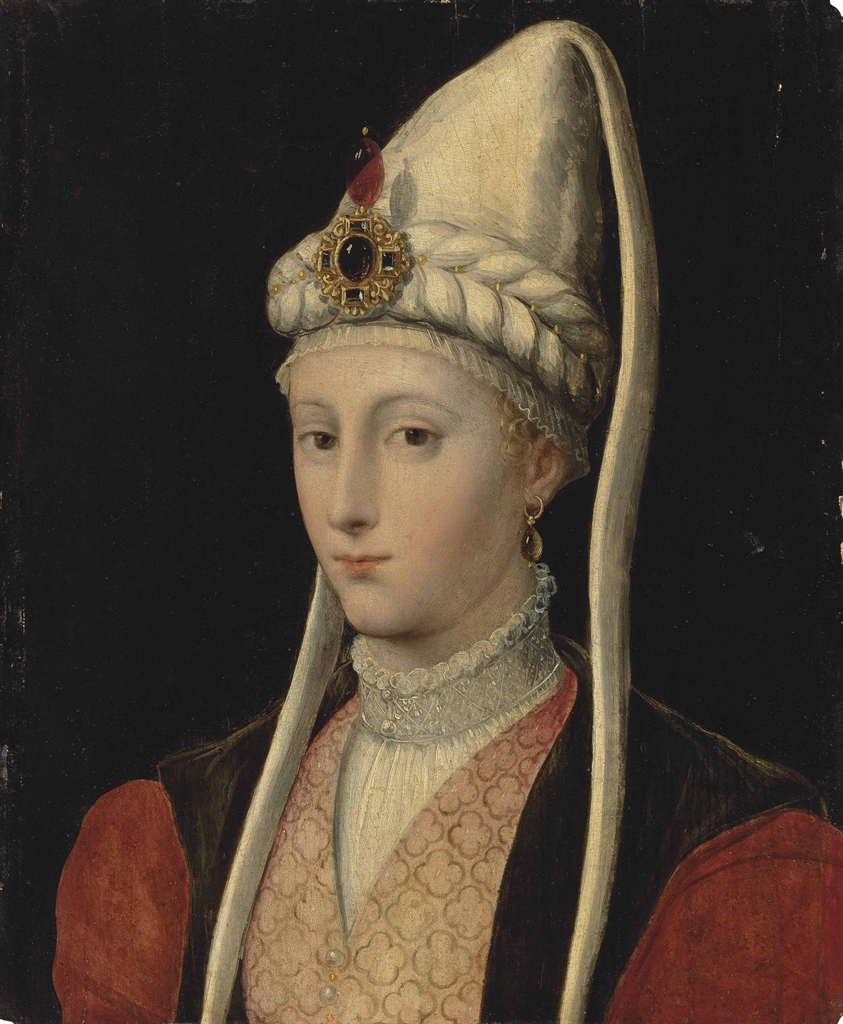Hürrem Sultan

Credit: Follower of Tiziano Vecellio, called Titian
Licence: Public domain, via Wikimedia Commons
16th century
| Giver: | Government, Individual |
|---|---|
| Receiver: | Individual or unstructured/informal group |
| Gift: | Other |
| Approach: | Philanthropy |
| Issues: | 10. Reduced Inequalities, 5. Gender Equality |
| Included in: | Social Activism |
Hürrem Sultan (c. 1504-1558) was the wife of Sultan Suleiman I (the Magnificent) and one of the most powerful women in Ottoman history. As the first haseki — the official title of the sultan’s principal consort — Hürrem exerted a profound influence over government affairs, advising her husband on critical decisions while carving out a leadership role for women within the court. In addition to her political accomplishments, Hürrem distinguished herself as a philanthropist. Through her endowment of wide-ranging municipal projects and charities, she established a new standard for generosity in the Ottoman empire.
Hürrem Sultan’s origins remain obscure. Historians generally agree that she came from Ruthenia in what is now Western Ukraine. Captured by Tatar slave traders as a teenager, she eventually arrived in Istanbul, where she was sold to the Ottoman court.
Intelligent and ambitious, Hürrem quickly rose to prominence within the royal household. She attracted the attention of Suleiman, who elevated her to the position of concubine. Although European emissaries to the empire referred to her as Roxelana, Suleiman called her Hürrem, Persian for “the laughing one.” By most accounts Hürrem and Suleiman shared a rare intellectual bond, engaging in lively discussions about literature and writing each other poetry.
Although the Ottoman sultan traditionally terminated sexual relations with a concubine once she bore him a son, Hürrem remained intimate with Suleiman throughout their relationship, eventually becoming his wife. This marked the first marriage between a sultan and a concubine since the early empire.
Hürrem shattered other norms within the court. She persuaded Suleiman to move the harem from the Seraglio into the Topkapi Palace, placing herself at the center of power. She regularly corresponded with European leaders, and oversaw the establishment of co-educational mekteps, or primary schools, enabling girls to receive the same opportunities as boys.
While it was customary for the sultan’s concubines to engage in philanthropic activities, Hürrem was the first to oversee charitable work within the capital city. At a time when much of Istanbul remained underdeveloped, Hürrem sponsored the construction of a major mosque complex in the city’s remote Fatih district. Designed by renowned Ottoman architect Mimar Sinan, the Hürrem Sultan Complex included a hospital, a women’s market and a mektep. By employing the local population, the project also helped transform the once desolate district into a thriving community.
Hürrem’s generosity wasn’t confined to Istanbul. Over the course of her life she funded a public soup kitchen in Jerusalem, established hostels for pilgrims traveling to Mecca and endowed religious charities throughout the empire.
In achieving unprecedented political power, Hürrem ushered in an era of Ottoman history known as the Sultanate of Women, a period when the sultan’s concubines, wives and mothers played key roles in affairs of state. Yet Hürrem’s secured her enduring legacy through her philanthropic work. Many of her endowments remain standing in the twenty-first century, while the mosque in Istanbul’s Fatih district continues to bear the name Haseki in her honor.
Contributors: Maha Tazi, Stephen Meyer
| Source type | Full citation | Link (DOI or URL) |
|---|---|---|
| Website |
Kenan Šurković, “Haseki Hurrem Sultan and her Contribution to the Development of Ottoman Art”. Islamic Arts, 2013 |
http://islamicartsmagazine.com/magazine/view/haseki_huerrem_sultan_and_her_contribution_to_the_development_of_ottom/ |
| Publication |
Levin, Carole . Extraordinary women of the Medieval and Renaissance world: a biographical dictionary. Greenwood Press, 2011 |
ISBN 978-0-313-30659-4. |
| Publication |
Smith, Bonnie. “Hürrem, Sultan”. The Oxford Encyclopedia of Women in World History. Oxford University Press, 2008 |
ISBN 9780195148909 |
| Publication |
Yermolenko, Galina. Roxolana in European Literature, History and Culture. Ashgate Publishing, 2013 |
ISBN 978-1-409-47611-5 |